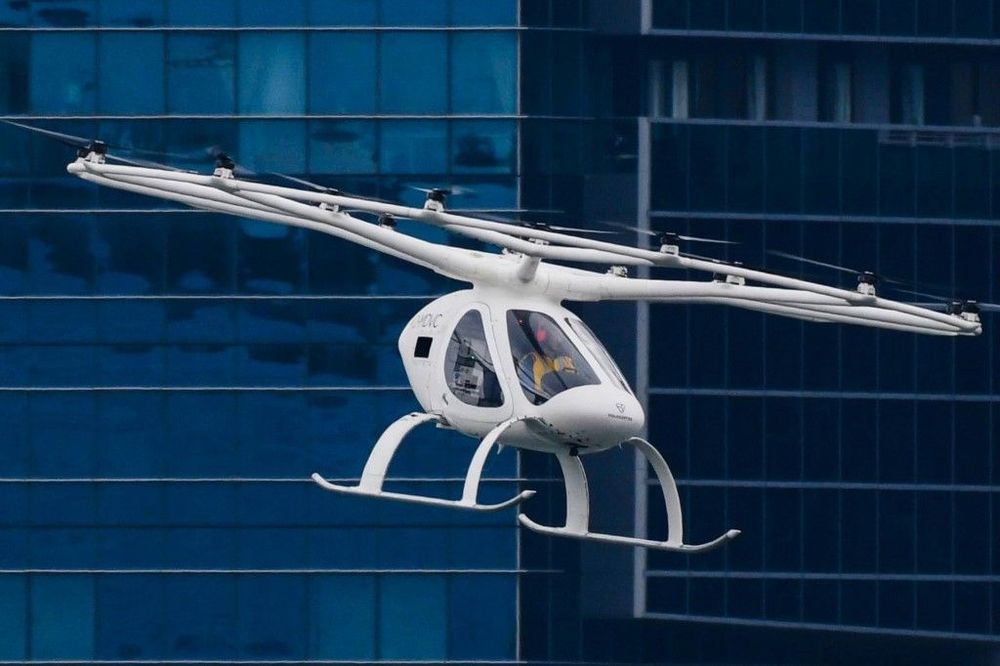A drone-like flying taxi whirred over Singapore’s waterfront Tuesday, with the firm behind the test hoping the aircraft will revolutionize travel in traffic-choked Asian cities.
The 18 propeller vehicle, developed by German firm Volocopter and with a pilot onboard for safety during the test flight, took off from a promontory and flew for about two minutes and 30 seconds around the Marina Bay district.
Heavy rains in the morning almost delayed the flight, but the skies cleared in time for the battery-operated, two-seater taxi to quietly fly past skyscrapers.









